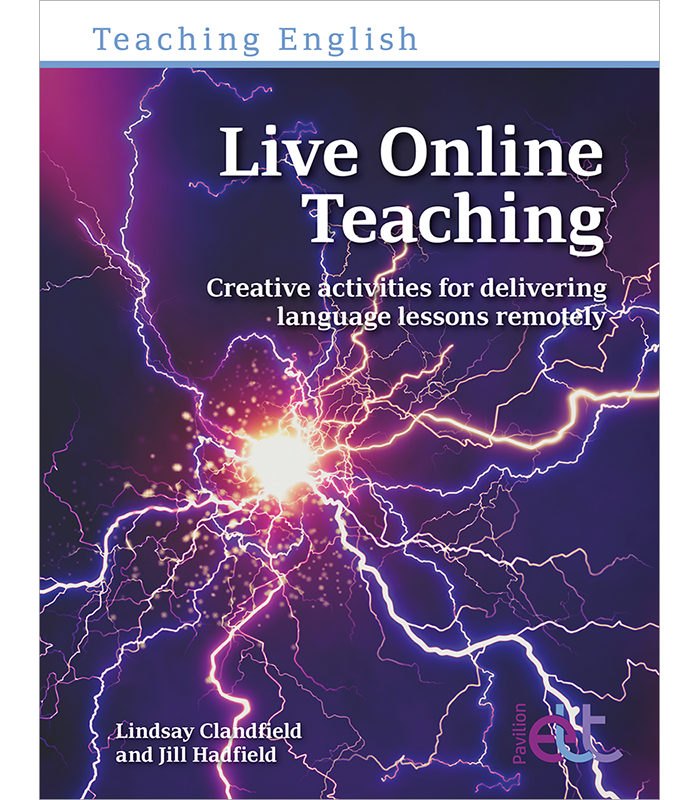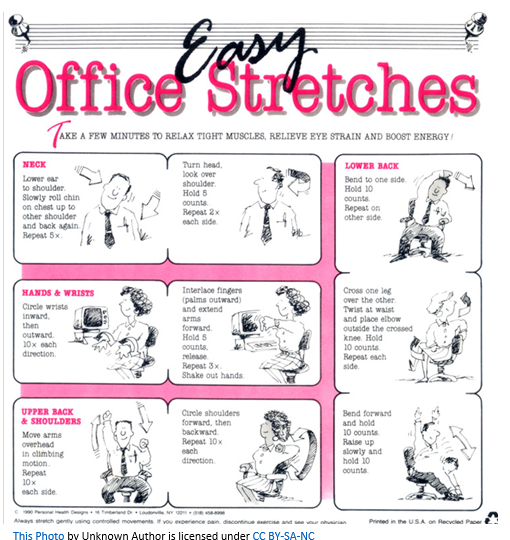Using Microbreaks in Online Language Teaching
Lindsay and Jill are the authors of Live Online Teaching, published by Pavilion Publishing 2021.

In our last article we looked at the concept of Zoom Fatigue, the tiredness that people get after being in videoconference calls for an extended amount of time. We believe that teachers, and even more so language teachers, can be particularly susceptible to zoom fatigue. In this second article we’d like to explore how to counter this fatigue through activities known as microbreaks.

The term ‘microbreaks’ is one we found commonly used in the world of remote working and business. It refers to a short break you take from your work during the day. More specifically and more recently it refers to taking a break from staring at a screen. Incorporating microbreaks into your lesson planning can help you, and your students, avoid the worse effects of Zoom fatigue. In some cases, it can reinvigorate and focus a class, and yourself. Additionally, microbreaks can be marshalled to do extra, quick, and fun language work.
Check out and check in
One quick way of incorporating breaks into your plan is to think about times when students can get away from the screen to do a part of the lesson. For example, you can start your lesson and let students check in online with you as they normally would. Do a warmer or quick review activity and outline the lesson goals. Then assign a reading or listening task, or some exercises that learners can do on their own, away from the screen. Tell students you want them to do these away from the computer, but they can come back if they have a question for you. Set a time limit and turn off your camera. When the time limit is up, turn your camera back on and reconvene the lesson.
Eye breaks and desk stretches
Another option is to do extremely short breaks. This could be as simple as the 20/20/20 rule for avoiding digital eye strain, which goes like this:
Every twenty minutes in front of a screen, take a twenty second break and focus on something twenty feet away.
This works best if you can actually get up and look at something outside and further away. If you have water to hand, use this moment to take a drink.
You could alternate breaks like this with short ‘stretching’ exercise breaks. There are many suggestions for these online (look for ‘desk stretches’). You could make this into body movement dictation activity and/or listening activity. We do recommend caution with forcing people to do any movements that might hurt them or be unsuitable; however, most desk exercises we have found are very low impact and can be done by almost anyone. If you do this, you may want to tell people to have their cameras off if they would be too self-conscious about doing something like this in front of each other.

A simple set of desk stretches.
Adding a language element to micropauses
As any good language teacher knows, you should never let an opportunity for some language practice go to waste! Microbreaks can also provide a good chance for a little bit of review or practice. One activity we saw many teachers use was a simple instruction like the following.
Stand up, stretch. Now walk to the nearest door and count the number of steps you took. Come back and tell the group how many steps it was.
The teacher then used this as a basis for some more practice work, such as comparative structures (Who’s the closest? Who walked the furthest? Do you have a bigger room?)
Here are some other examples of this kind of activity:
Stand up, stretch. Now...
Walk around the room and find three things that are green. Come back and tell us what they were in English.
Walk around the room and name as many things in English as you can in 30 seconds. How many things could you name?
Go to the window and listen for 30 seconds. What do you hear? Be prepared to tell us three things you heard in English.
Go to the fridge and open it. How many things can you name in English? Come back and tell us.
Choose a space in your house and tidy it. Come back and tell us what you tidied.

Longer ‘zooming out’ activities
We have experimented, especially while giving classes or sessions in lockdown, with longer zooming out activities. The aim is to get the students outside in the open air and away from the screen, with a task to do while they are enjoying the fresh air and change of scene. Here is one such activity, in which students write a ‘sensory poem’.
1 Students go outside (or look out a window) for 3 to 5 minutes to sit in silence and think about the following questions.
- What can you see?
- What can you hear?
- What can you smell?
- What can you feel?
- 2 When they come back, they discuss what they experienced.
- 3 On the shared screen, give students a framework to write a poem.
Spring/summer/autumn/winter [morning/afternoon]
Hearing: [noun] …ing
Sight: [noun] …ing
Smell: The scent of [noun]
Touch: [noun] [preposition] [noun]
Here is an example of one such poem written by Jill’s students.
Autumn morning
Wind blowing
Leaves falling
The scent of bonfire smoke
A chill in the air
A final word of advice
We’ve given lots of workshops on the topic of microbreaks, and one frequent comment we hear is ‘If I give my students a microbreak, how do I know they will come back?!’ We have two suggestions for this. The first is to not call these activities ‘breaks’ but rather, ‘activities’. If you say ‘take a short break’ then yes, there can be a problem reconvening people. Saying ‘we’re going to do a short activity away from the screen’ may be more helpful in keeping people on track.
Secondly, the truth is that in the face-to-face class there are many occasions where ‘microbreaks’ naturally occur. Times when you are preparing the board, or the time between activities where you are setting things up, or when a speaking activity is winding down and you are perhaps talking with an individual pair of students. Everyone needs these little moments of rest during a class, and we believe it should be the same in an online class. Allowing people short breaks to refocus attention and energy is not only beneficial for them, but also helpful to you and even more so if you are doing several online classes a day. We hope that we’ve shown that these activities can also be made fun and productive.
Please check the Pilgrims f2f courses at Pilgrims website.
Please check the Pilgrims online courses at Pilgrims website
‘What is ‘Zoom Fatigue’ and How Does It Affect Language Teachers?
Lindsay Clandfield, UK;Jill Hadfield, New ZealandUsing Microbreaks in Online Language Teaching
Lindsay Clandfield, UK;Jill Hadfield, New ZealandFlipped Classroom by Edpuzzle in the Context of Freshmen’s Learning ELF
Mai Tran Thi Thanh, VietnamUsing Netflix in the EFL Classroom - An Example
Anna Pereszlényi, Hungary